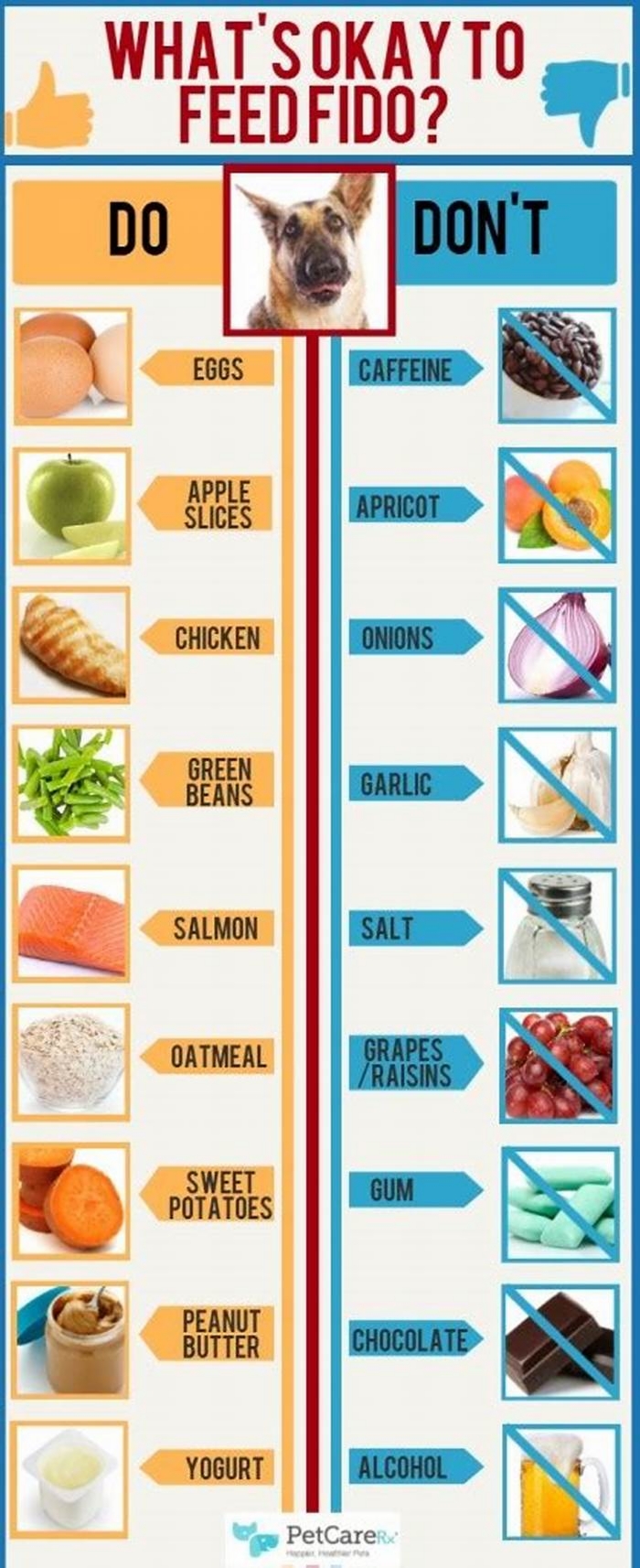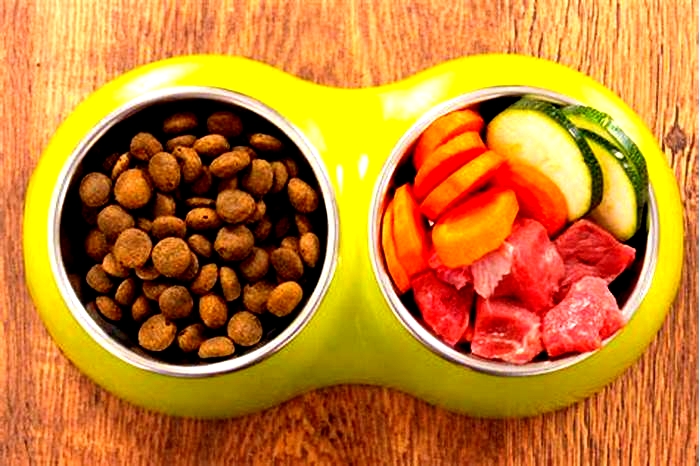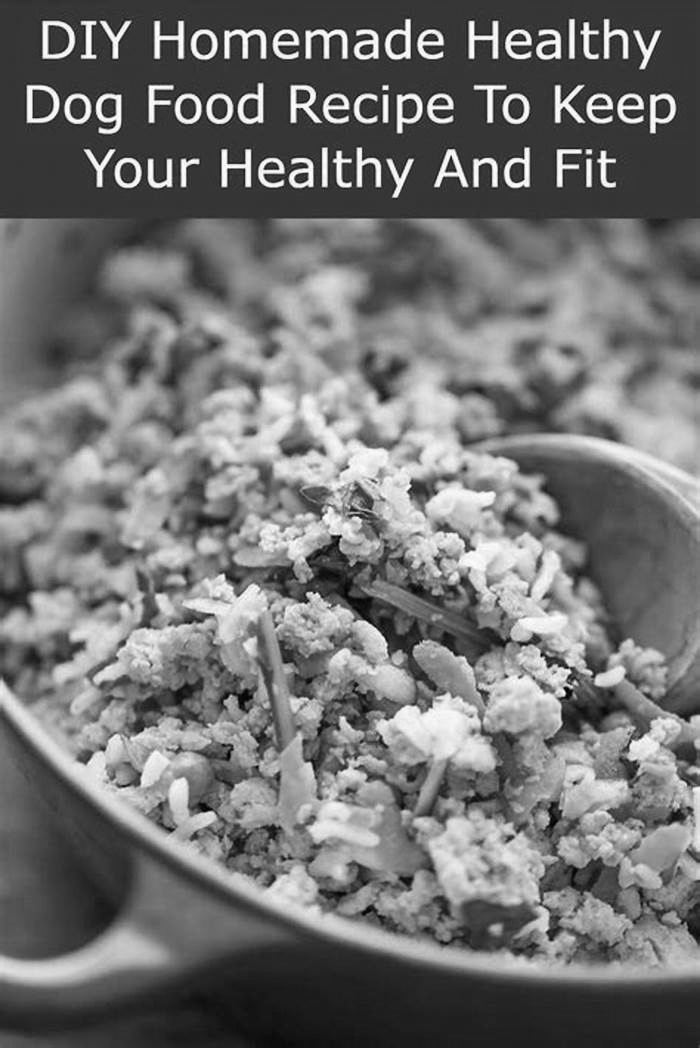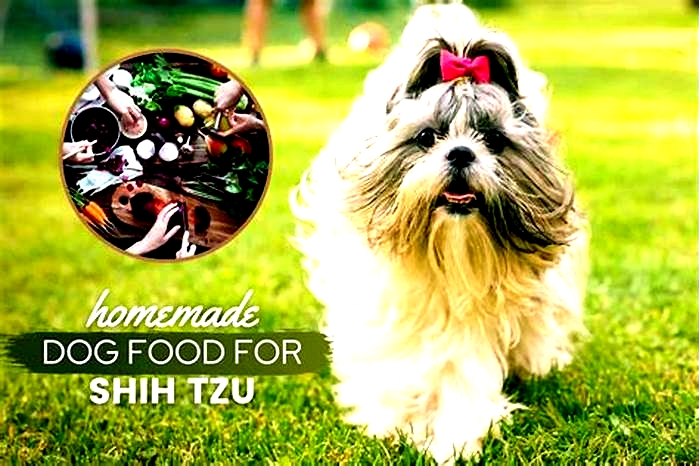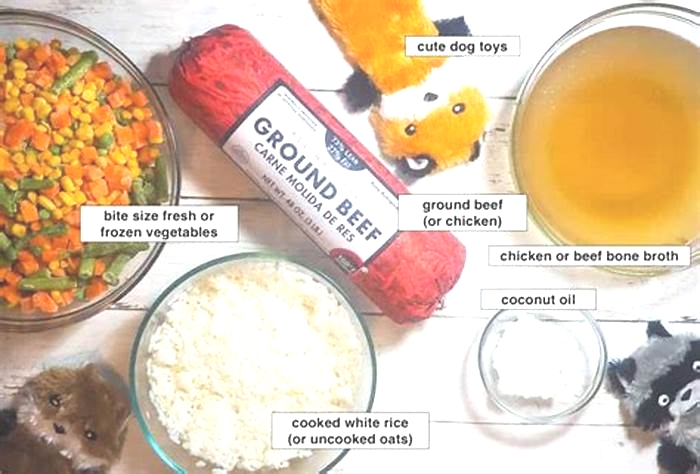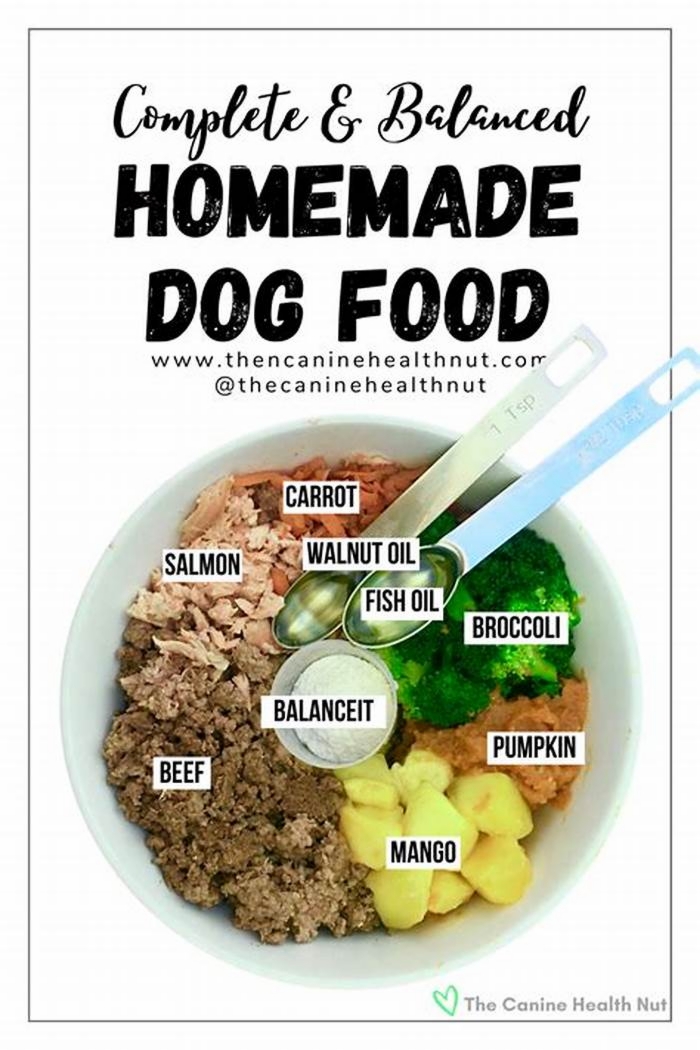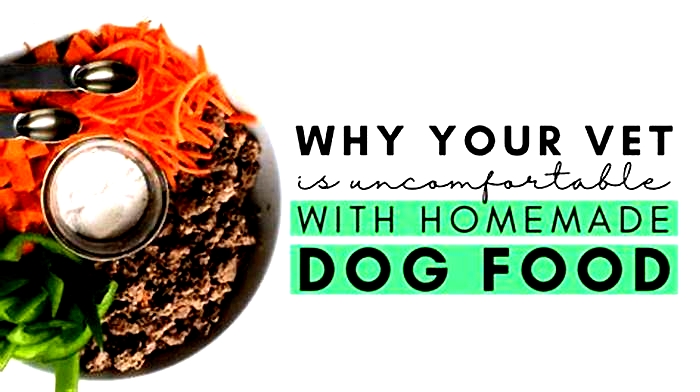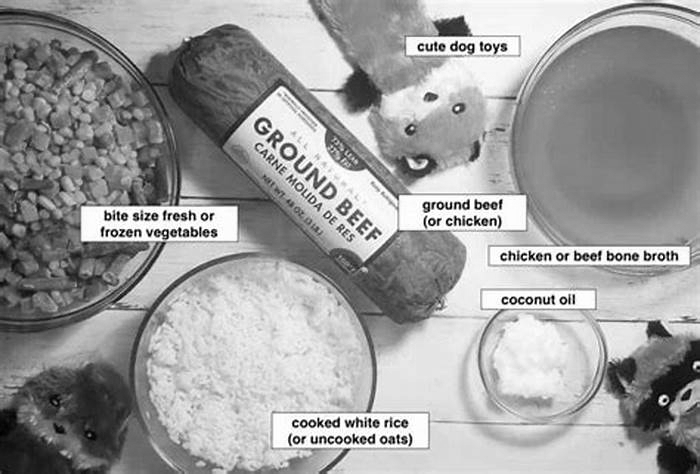What vegetables can you put in homemade dog food
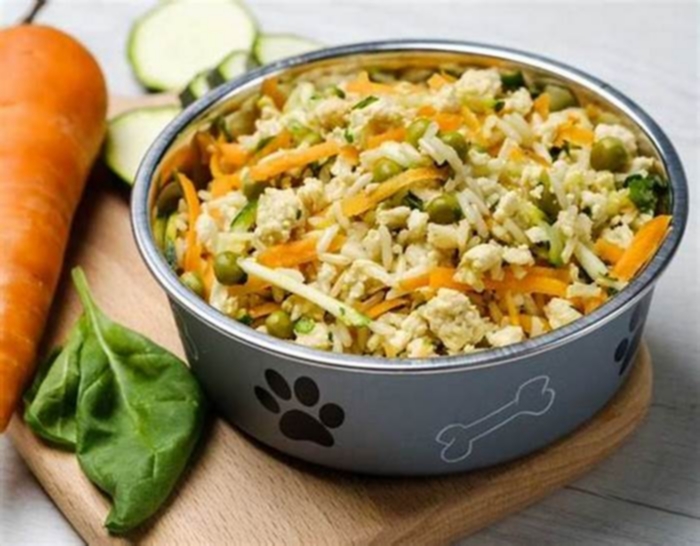
Vegetables to add to Dog Food
Some content may contain affiliate links to products which means we could earn a fee on your purchase. Thank you for visiting
Whether youre feeding a homemade diet or just looking for a few healthy options for livening up your dogs daily dish, vegetables definitely have a place at the dog table.
Which Vegetables are Best for Adding to Dog Food?
First and foremost, the best veggies to give your dog are the ones that are safe for dogs, followed by the ones hell actually eat and not just eat around.
Most dogs (not all) will happily eat roasted vegetables such as
- squash
- carrots
- bell peppers
- cauliflower
- brussel sprouts
- broccoli
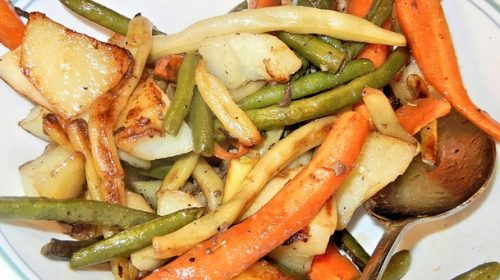
Beyond this list, well cover other ways to give your dog vegetables and well also review the unsafe veggie list and precautions when feeding raw.
Can You Feed Your Dog Too Many Vegetables?
Yes, while dogs are omnivores like we are, too many vegetables in the diet could cause gas, bloat and lead to hunger. There are also seeds to consider such as those found in squash and cucumbers which could irritate your dogs GI tract if eaten in excess.
The best approach to take when trying to incorporate healthy snacks is to have a variety of vegetables with and without seeds and of different colors. That way, your veggie treats will be more naturally balanced.
After awhile, your dogs bathroom business will tell you exactly which vegetables they cant digest properly. Simply adjust these vegetables as you learn how your dog handles each vegetable.

Are Fresh Vegetables Good For Dogs?
Some fresh veggies are good: yes. If your dog enjoys a crunchy vegetable such as carrot or celery consider yourself lucky! Dogs can be given the occasional raw, fresh vegetable such as a carrot, celery stalk or cucumber. Carrots and celery, in particular, can help clean the gum line of dogs who enjoy chewing their vegetables.
Other vegetables such as squash and brussel sprouts should not be given to your dog for raw eating because they are too hard to digest. But you can definitely blanch or roast them for an extra special dog treat.
A good rule of thumb is to ask yourself if you would eat the vegetable raw. If not, dont give it to your dog raw.
Broccoli, beans and cauliflower can be eaten raw, but digest better when blanched or cooked.
Precautions for Raw, Fresh Veggies
Dont give carrots or celery stalks to gulpers. Aside from the choking hazard, raw vegetables are harder to digest. A dog who gulps his food without chewing could experience extreme gastro-intestinal upset if they have to digest a whole carrot.
Always make sure you are present and paying attention while your chewer dog enjoys his carrot.
When giving a celery stalk as a dog treat, peel the tough, stringy layer of the outer portion so your dog can chew right through the stalk without the fibrous strings. Those strings can tickle the throat or cause irritation and/or gagging.
Best Vegetables for Homemade Dog Food
These vegetables work well, providing your dog can digest them without issue:
- Carrots
- Celery
- Zuccini
- Yellow Squash
- Pumpkin
- Beans (Green, Yellow, Wax)
- Bell Pepper (Never HOT peppers)
- Brocolli
- Cauliflower
As for potato and pea, we consider them a starch and not a vegetable. If you want give it to your dog, it has to be cooked and given in strict moderation due to the sugar conversion. Sweet potato is recommended over white potato and boiled is healthiest.
Can Dogs eat Canned or Frozen Vegetables?
Its best to avoid giving canned vegetables to a dog because canned vegetables could contain way too much sodium for your dog to safely handle. Frozen vegetables are a great option when preparing a dogs meal, just make sure they are plain, frozen vegetables and not in a spicy or oily, buttery sauce.
I make homemade dog food in large quantities and freeze it on a monthly basis. I shop the sales and of course try to buy in season when vegetables are in abundance.
However, when shopping out of season, frozen bagged vegetables are a solid back up plan when making my dogs meals.
Dog Food Made Fresh Daily
So if youre making your dogs food on a daily basis and enjoy the same vegetables as your dog, you could just make life easy and eat the same veggies on a daily basis as long as they are not covered in butter or other unnecessary fats.
Most dogs prefer their vegetables roasted in the oven with a tiny bit of coconut oil or olive oil just as you would make for yourself.
When roasting (cooking) you have a lot more options because the vegetables become easier for your dog to digest.
- Brussel Sprouts
- Broccoli
- Cauliflower
- Bell Pepper (Not HOT)
- Squash
- Beans
- Carrots
Best Veggies for Freezing Dog Food
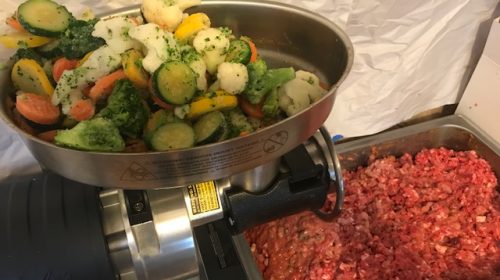
If youre feeding a raw diet or freezing meals (like I am) youre better off with sticking with vegetables that freeze well in their raw form (or blanched).
My dogs favorite veggies that freeze well (for a dogs meal) are squash, carrots, broccoli, cauliflower and spinach.
Cucumbers, celery and other lettuces turn into a wet mess and brussel sprouts overpower the entire meal as they thaw. For that reason, I only give my dog cooked, roasted brussel sprouts and do not add them to his dinners for freezing.
If youre interested in raw diet info check my post: Raw Diet for Beginners. Igooverthe3popularwaystointroducerawfoodandmakethetransition.
What Vegetables are NOT good for Dogs?
Do NOT feed dogs these vegetables in their cooked or raw form:
- The entire Onion family: Onions, green onion, scallions, chives, leeks.
- Garlic
- Avacado (not any part)
- Tomato (stem and parts near stem)
- Mushrooms
- Peppers (bell okay)
How to Prepare Vegetables for Dogs
Clean
Always clean vegetables the same way you would if feeding them to a child. Your dog cannot process pesticides any easier than we can.
Peel
Peel celery strands and any tough, soil growing vegetables just as you would for personal consumption.
Roast or Blanch
If you have time, you can roast vegetables twice per week and store them in the fridge for healthy, tasty treat options. Simply cut them a little larger than bite size (most will shrink), drizzle a tiny amount of olive or coconut oil and roast them until tender at 375-400.
If your dog will eat vegetables boiled then by all means go ahead and boil them.
As long as you dont overcook them, theyll retain a good amount of their nutrients so your dog gets the total benefit of a healthy treat option.
Final Thoughts
Having a stash of veggies for your dog is a really smart and healthy way to be able to feed your dog several treats a day without all the calories or fillers found in commercially packaged offerings.
Every day, more and more dog foods and treats are being recalled for contaminated meat or other added ingredients. You can definitely take the stress out of dog treats by making some of your own.
Vegetables are easy to make and far healthier for your dog than other treats with fillers, chemicals and preservatives. This is one area where you can take control of your dogs health for very little time and cost. Have fun and enjoy the process!
Thanks for visiting SeniorDogDays!
Dear Valued Reader,
Were trying a new approach. Maybe you didnt notice but throughout this article, you werent bothered by annoying popup ads begging for your email address. And thats because Senior Dog Days is on a mission to keep dogs safe without making you watch videos or share your email before giving you the important information youre looking for.
If you appreciate this approach and can spare a buck we promise to put it to good use. All donations go right back into this site and cover expenses that we pay out of pocket all for the love of dogs.
There is no such thing as a small donation.
Thanks for helping!
[wpedon id=2028]
.
Homemade Dog Food Recipes: Choosing Balanced Ingredients
Are you considering switching your dog to a homemade diet? A good place to begin is by discussing it with your veterinarian and/or a veterinary nutritionist. You may think that sounds unnecessary when there are so many recipes for homecooked dog meals available on the internet. However, the experts say that many of those recipes were not reviewed by veterinary nutritionists to make sure they provide a nutritional, well-balanced diet for your dog. This is why some owners prefer to feed pre-made fresh food.
The American College of Veterinary Nutrition (ACVN) warns that your dogs unique nutritional requirements will depend on the age, size, health, and breed. Also, there are dogs for whom a homemade diet may not be appropriate or might even be damaging. We generally dont recommend homemade diets for a dog less than one-year-old. If young dogs dont receive the appropriate amount of calcium and phosphorus, significant bone abnormalities may result, says Dr. Jerry Klein, AKC chief veterinarian. Pregnant and lactating dogs also have unique dietary requirements that may not be addressed by a recipe found on the internet.


The ABCs of a Balanced Dog Food Diet
Understanding the basics of what makes a homecooked diet balanced for your dog will help when you discuss the options with an expert. Here are important ingredients for the canine diet.
Protein: According to the ACVN, dogs must have protein in their diets that contain 10 specific essential amino acids their bodies cant produce. This is necessary for the creation of glucose, which transforms into energy. Sources of protein include chicken and turkey, after removing bones, fat, and skin; beef and lamb; pork in limited amounts; salmon and some other fish such as whitefish, herring, walleye, flounder, and Arctic char.
Fats and fatty acids: The most concentrated sources of fats in a dogs diet come from animal fats and plant seed oils. A healthy diet supplies the fatty acids the dogs body doesnt manufacture. Fatty acids support the function and structure of cells, keep skin and coat healthy, and enhance the taste of the food. Sources of fatty acids include plant-based oils, including corn, soybean, canola, and flaxseed oil, as well as fish oil.
Carbohydrates: Dogs get some of their energy from carbohydrates, which include sugars, starches, and dietary fibers. Sources includerice, pasta, oatmeal, and quinoa.
Fiber: Dogs need fiber in their diet to keep their gastrointestinal (GI) system functioning and to help them from becoming overweight. Good sources of fiber for dogs include carrots, pumpkin, apples, dark leafy greens, brown rice, and flaxseed.
Vitamins: Vitamins are required for growth and maintenance. Vitamin deficiencies can cause a variety of health problems; however, they can also be dangerous in large quantities.
Vitamins dogs require include A (carrots, pumpkin), B vitamins (liver, green vegetables, whole grains), C (fruits and vegetables, organ meat), D (liver, fish, beef), E (leafy green vegetables, liver, bran, plant oils), K (fish, leafy green vegetables, fish), and choline (liver, fish, meats, egg yolks).
Minerals: There are 12 essential minerals for dogs:
- Calcium (tofu, green beans, broccoli, and cauliflower) and phosphorus (meat, eggs) for strong bones and teeth.
- Magnesium, potassium, sodium, and chloride (fruits, vegetables, whole grains) for nerve impulse transmission, muscle contraction, and cell signaling.
- Sulfur (meat, fish, molasses) for healthy skin, coat, and nails.
- Iron (red meats, poultry) for supporting red blood cells and the immune system.
- Iodine (dairy, kelp, seafood) for a healthy thyroid.
- Zinc (eggs, lamb, liver, brewers yeast) for the immune system, healthy skin, and coat.
- Selenium (meat, vegetables, seafood, brown rice) to boost the immune system.
- Copper (whole grains, seeds, and seafood) for healthy bone growth.
Water: We sometimes overlook this important ingredient of a healthy dogs diet, but there really is no dog food that contains enough water for your dog. Keep clean, fresh water out always.

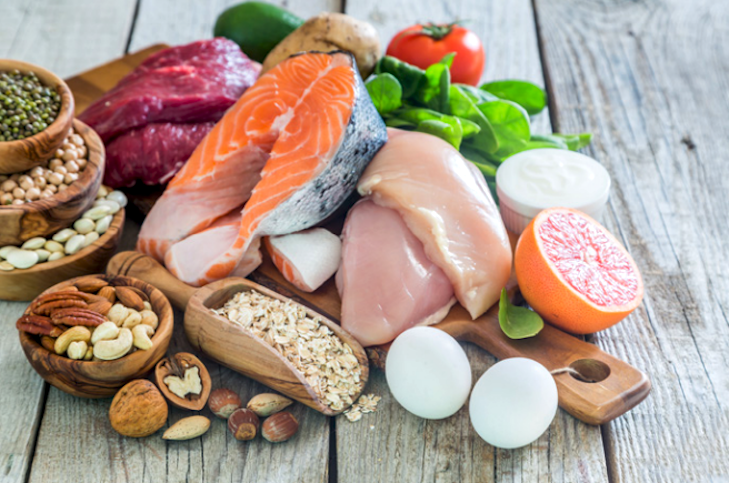
Making the Transition
Consult a veterinarian: If youve decided to transition your dog to a homemade diet, your first step should be to consult a veterinarian or veterinary nutritionist. Those experts will consider your dogs age, size, and health history and help you identify a high-quality recipe that is tailored to meet your dogs specific nutritional needs.
Buying ingredients: When you buy ingredients for your dogs homemade meals, you need to pay as much attention to the source, expiration dates, and labels as you do when you buy food for yourself.
Making the switch gradually: Whenever you change your dogs food, whether to a homemade diet or a new commercial food, a gradual switch is best to avoid upsetting your dogs GI system. For at least five-to-seven days, gradually mix in more and more of the new food with the old food, as you allow your dog to adjust to the change.
Follow the recipe: Be sure to follow the recipe. Tufts Cummings Veterinary Medical Center Clinical Nutrition Service published a study to determine how well owners adhered to homecooked diet recipes a median of one year later. Only 13 percent were still feeding the original nutritionally balanced diet recipe.
Clear instructions: Instructions about preparation and quantities are important. The way you cook the ingredients for example, steam, roast, or boil can impact the nutrition of the diet. Substituting or adding ingredients can also cause nutritional deficiencies. A study reported in the Journal of the American Veterinary Medical Association reported that a lack of clear instructions in many recipes forces pet owners to make assumptions that can result in food that is nutritionally inadequate and can even be harmful if fed to your dog on a long-term basis.
Follow-up:Once youve made the transition, pay attention to any digestive changes your dog may have. If his stool softens, he vomits, or has diarrhea, check in with the veterinarian. Whenever you change your dogs diet, you also need to monitor his weight. It may take a while to determine the correct portions for his size, age, and energy level.
Resources for the Chef
- Your best resource and first stop is your dogs veterinarian, who knows your dog and has a thorough understanding of his health history and current condition.
- A good resource to help find a veterinary nutritionist for a homemade diet consultation is the Diplomate directory at www.acvn.org. If there isnt a nutritionist in your area, you can consult with one remotely.
- An alternative option is to use the online consulting service called BalanceIT, a site operated by a veterinary nutritionist to formulate a basic, nutritionally balanced recipe.
- Another site that provides answers to your questions is: Ask the Nutritionist
- ChefPaw is the latest way to provide your pup with nutritious and delicious meals, giving you a more efficient way to prepare homemade dog food. VisitChefPaw.comto learn more
ChefPaw by Innovet Pet Products is helping you take full control of your dogs diet with the first countertop Dog Food Maker of its kind. Striving to save you time and money while maximizing your dogs nutrition, ChefPaw can make fresh, homemade food for your dog in 40 minutes. At ChefPaw, your pets happiness and well-being take center stage.

